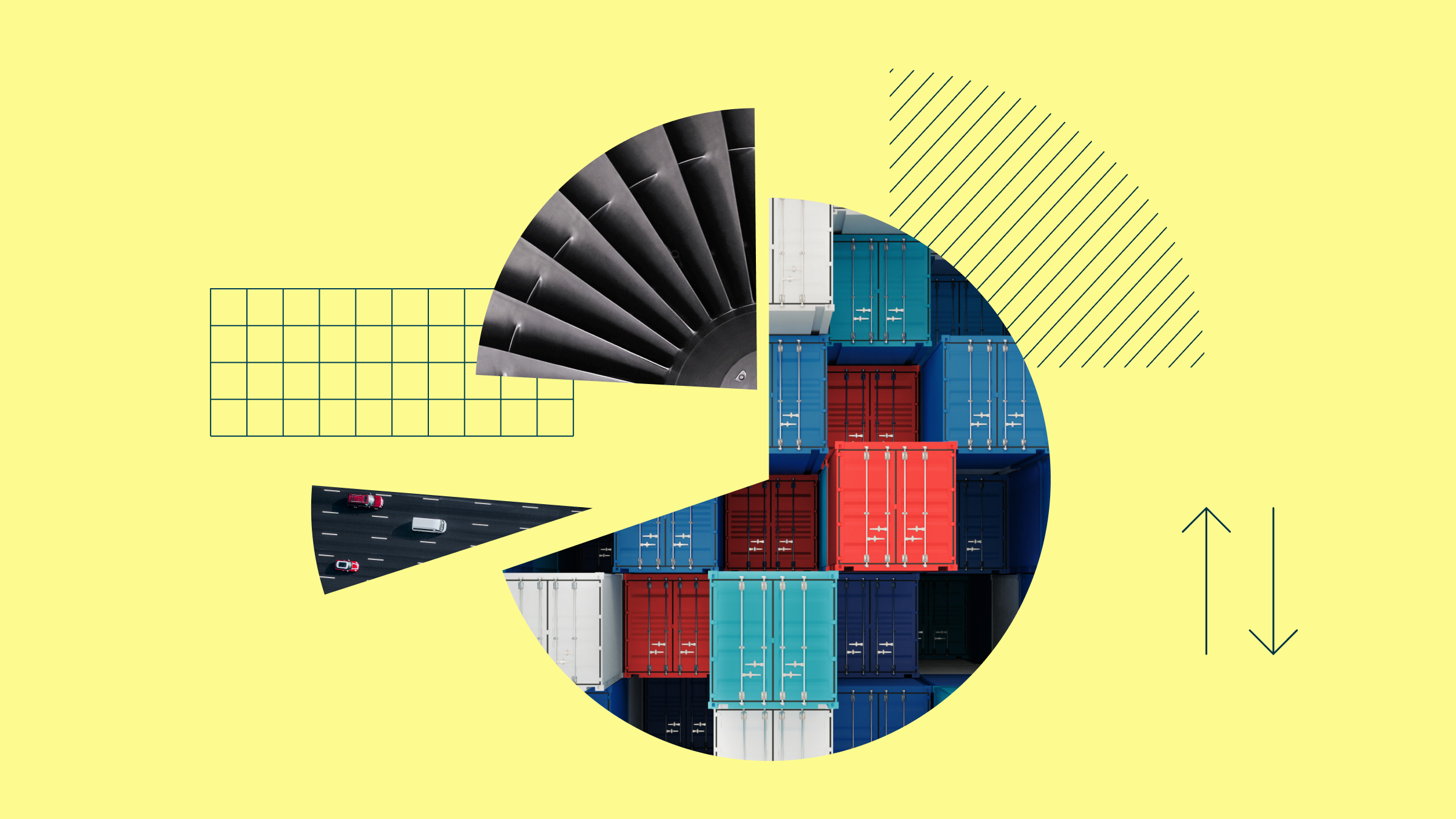Rolle im Portfolio
The iShares MSCI China Index ETF is best suited as a core building block for a portfolio, offering exposure to the MSCI China Index, which is composed of large- and mid-cap mainland China companies across H-Shares, Red Chips and P Chips listed in Hong Kong and B-Shares listed in China, which are the major non-domestic Chinese securities available to non-domestic investors. For investors building a global portfolio, this ETF can also be used as a tactical tool to bet on non-domestic mainland China companies.
From a sector perspective, the MSCI China Index is fairly concentrated in the financial sector which represents 34% of the index’s value as of this writing. At the individual security level, the index’s top 10 holdings account for 51% of its value.
Prior to investing in this ETF, we advise investors to check their existing exposure to domestic and non-domestic Chinese equity markets to avoid unintentional concentration. While both the domestic and non-domestic Chinese equity markets are driven by the Chinese economy, the two types of markets could offer different risk/reward profiles and may be subject to different exchange regulations and market forces. Over the past 3 years, on an annualised basis, the MSCI China Index, returned flat with standard deviation of 24%, while MSCI China A, measures the domestics Chinese A-Shares market returned 2% with standard deviation of 29%.
Fundamentale Analyse
China’s economy has recovered strongly after the global financial crisis, posting GDP growth of 10.4% in 2010. Growth slowed to 9.2% in 2011 and further to 8.1% in Q1 2012 due to various reasons including, but not limited to, weaker export demand from a debt crisis rattled Europe and a weakening local property market. At the National People’s Congress held in March 2012, Premier Wen Jiabao projected a GDP growth target of 7.5% for 2012, versus 2011’s projected rate of 8% and actual GDP growth of 9.2%. Nevertheless, China remains one of the fastest growing economies in the world.
China has recently eased its tightening policy stance, with the People’s Bank of China lowering interest rates in June 2012 for the first time in 3.5 years and lowering the reserve requirement ratio (RRR) for banks in December 2011 and again in February and May 2012, providing additional liquidity to the market. The lowering of the RRR has generally been viewed as a positive sign, and the market reacted positively after the announcement that the RRR would be decreased. In particular, the lowering of RRR also means that Chinese banks will be able to offer more loans. Nonetheless, Premier Wen cited in April 2012 that the current bank monopoly must be broken up. Investors should be aware of the potential for future changes in Chinese banking regulation and the effects it could have on incumbents’ market share. Chinese banks account for 23% of this ETF’s portfolio.
Together with the insurance companies (7%) and real estate companies (4%), the financial sectors account for 35% of the portfolio, the largest sector exposure for the ETF. China Life Insurance (3%) and Ping An Insurance (2%), the largest Chinese insurance companies are also included in the portfolio. The performance of shares of Chinese insurance companies is inherently linked to the domestic China A-Share market itself as insurance companies invest their surplus in local equity markets.
Individual constituents with weights over the 5% mark, include China Mobile (00941) (10%), China Construction Bank (00939) (7%), Industrial and Commercial Bank of China (01398) (6%) and CNOOC (00883) (6%).
The second largest sector exposure for this ETF is energy, accounting for 17% of the portfolio. This exposure consists of oil and coal companies. These energy companies are not only exposed to global energy prices but also to Chinese regulations in the energy sector and their overseas expansion strategies, if any.
The third largest sector exposure for this ETF is telecommunication services, accounting for 13% of the portfolio, including China Mobile (00941) (10%), a telecommunication services giant, which is also the largest component of the ETF’s portfolio. The Chinese telecommunication services industry is subject to local regulation and rapid technological changes.
While the underlying stocks are mostly listed in Hong Kong and share prices quoted in Hong Kong dollars, the businesses derive the majority of their income in Mainland China. As a result, the underlying stocks are indirectly exposed to fluctuations in the Renminbi (RMB).
Overall, investors should be reminded that the Chinese economy could be affected by the global economy and local monetary and fiscal policies.
Indexkonstruktion
This ETF tracks the MSCI China Index which is a free float-adjusted market capitalisation weighted index. Chinese companies across H-Shares, Red Chips and P Chips listed in Hong Kong and B-Shares listed in China are eligible for index inclusion, where (1) H-Share companies refer to companies incorporated in mainland China and approved by the China Securities Regulatory Commission (CSRC) for a listing in Hong Kong; (2) Red Chips are companies controlled by the state or a province or municipality; (3) P Chips are run by private sector China businessmen and (4) B-Share companies are incorporated in China, and traded on the Shanghai and Shenzhen exchanges. B Shares only account for 1.0% of the index. The total market value of the constituents covers 84% of the eligible universe as of this writing. The index is reviewed and re-balanced on a quarterly basis. The index has 148 constituents as of this writing. The index is top heavy with the 10 largest constituents accounting for almost 50% of the total market capitalisation of the index. The index has a concentration in the finance sector, at 35%. Other major sector weights include energy (17%) and telecommunications (13%).
Fondskonstruktion
This ETF may adopt either a representative sampling strategy or a full replication strategy to track its reference index. As of writing, the ETF is using a representative sampling strategy with the portfolio having 145 out of the 148 index constituents, where the B-Share companies were not included in the ETF’s portfolio. We believe not investing in B-Share companies should only result in minimal tracking error, given B-Share companies only account for 1% of the index. While the manager may enter into securities lending for the ETF, the manager has no intention to do so. The manager intends to distribute all of its income, net of fees, on an annual basis. The ETF may invest a maximum of 15% of its NAV in futures contracts, options and warrants for the purpose of hedging.
Gebühren
The ETF levies a total expense ratio (TER) of up to 0.59%. This is sits in the low end of the ETFs tracking the same or similar indices.
Alternativen
There are six other ETFs that track the MSCI China Index, including the HSBC MSCI China ETF (03033, listed in Hong Kong), and a European-domiciled version of the HSBC MSCI China ETF (HMCH, listed in the UK, Switzerland and France), the db x-trackers MSCI China TRN Index (XCS6, listed in the UK, Switzerland, Germany and Singapore), ETFlab MSCI China (EL46, listed in Germany), Source MSCI China ETF (MXCS) and iShares MSCI China Index (MCHI, a US version of the ETF listed in the US). Compared to these alternatives, the iShares MSCI China Index ETF has a TER at the low end, with HSBC MSCI China ETF listed in HK having a lower TER of 0.50%. All alternatives are physical ETFs except the db-X trackers ETF which is a synthetic ETF.
Investors may also consider ETFs that track other non-domestic Chinese market indices, e.g. the FTSE 25 Index, HSCEI and MSCI China H Index, which all have a correlation of 99% with the MSCI China Index.
Die in diesem Artikel enthaltenen Informationen dienen ausschließlich zu Bildungs- und Informationszwecken. Sie sind weder als Aufforderung noch als Anreiz zum Kauf oder Verkauf eines Wertpapiers oder Finanzinstruments zu verstehen. Die in diesem Artikel enthaltenen Informationen sollten nicht als alleinige Quelle für Anlageentscheidungen verwendet werden.

















